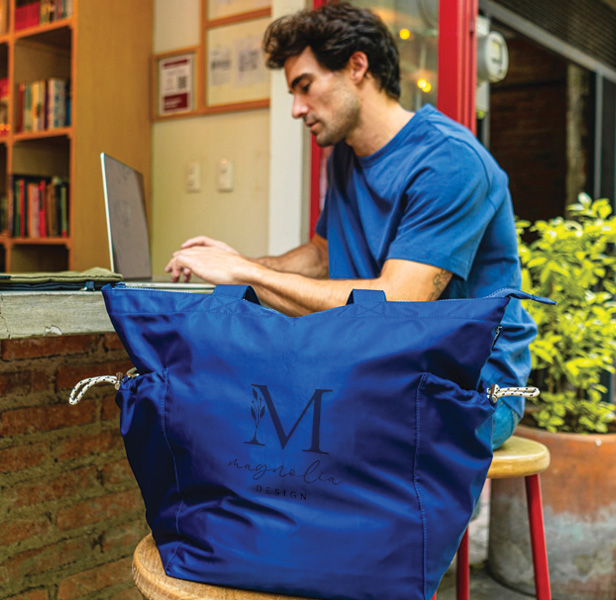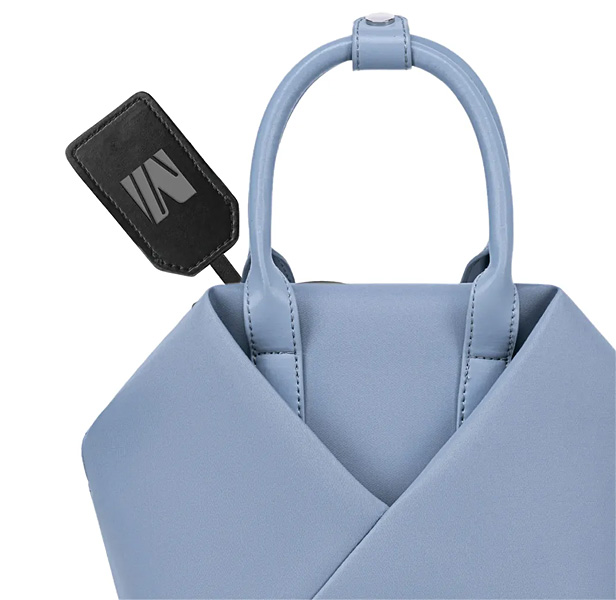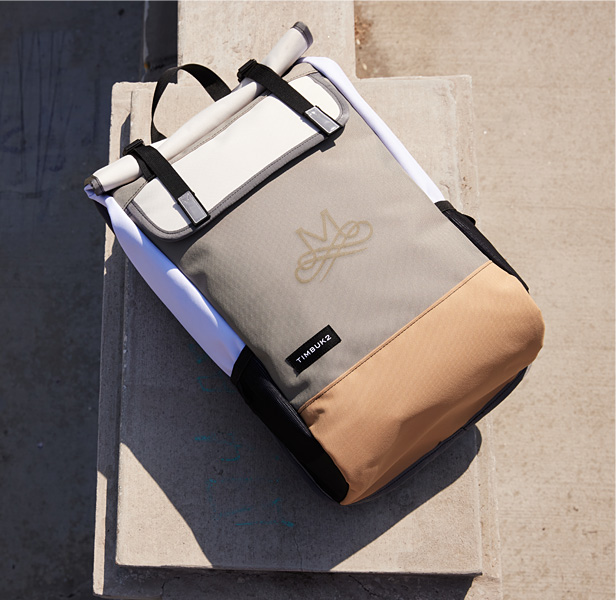June 06, 2024
To Tote or Not To Tote: Bag Suppliers Weigh in on Trends
From crescent bags to wearable work totes, here’s a look at what’s in the bag (market) currently.
Bye-bye, basic bags.
As sustainability continues to position reuse to the forefront of promo, bag suppliers report that end-users (and distributors) are looking for fashion-forward, everyday staples that won’t be pushed to the back of the closet. Bright colors, unconventional silhouettes and subtle branding – rather than in-your-face logos – are among the design elements that are trending.
Newcomer supplier Uinta Design (asi/92416) (founded in 2020) pushes styles like crescent, puff and belt bags for partnerships with youth-favorite brands like MrBeast, HOKA and Peloton. On trend this summer, brand director Caroline Wilkins points to clear PVC stadium totes, upgraded drawstring bags and casual-forward wear.
“Rounder, softer silhouettes that definitely lean more comfortable (are trending),” says Wilkins. “That includes puff … reinventing the basic silhouettes with neoprene, terry cloth, a lot of recycled material.”

Uinta Design’s oversized puff crescent bag.
Distributors looking to capitalize on fashion trends should advise clients to incorporate their branding in creative ways, rather than just a logo, to create a truly wearable piece, according to Wilkins. She points to Uinta’s incorporation of brand elements throughout their products’ designs and functions.
For YouTuber MrBeast’s youth-based audience, Uinta designed a colorful, paint-splattered backpack with his logo etched on its top, fit for school and beyond. A running belt for shoe brand HOKA featured a blue “Fly Human Fly” bag (the brand’s color and motto) accentuated with a green zipper and an orange strap, imprinted with the brand’s logo in white.

Uinta Design customized its Pulse Running Belt for HOKA.
“You can always slap a logo on a bag, for sure,” says Wilkins. “However, you lose that brand essence. Whereas, if you take the subtlety of incorporating brand elements into the item, you’re gonna end up with a product that’s going to be loved long term.”
Disillusioned by wasteful practices during her 28-year tenure in the fashion industry, Pam Seidman founded BYBBA (Bring Your Bag Back Around) (asi/42442) in 2021 as a “brand around reuse that wasn’t just about reusable bags.” A truly sustainable bag, according to Seidman, provides daily functionality.
“We want people to use this over and over ongoingly,” says Seidman. “We want it to actually deliver in a way that is fun and exciting and not just a promo bag, a slap on. That’s very much not what we’re into.”
Given its emphasis on sustainable rather than trend-based production (BYBBA practices “slow fashion,” according to its website), Seidman says the New York based-brand builds bags that “hold up over time.” BYBBA bags – made from recycled and upcycled materials – typically feature a drawstring, foldable design and are large format, which Seidman points to as a trend.
“I’m looking for what the trend is, but I’m not gonna jump on something that feels trendy,” says Seidman. “Sustainability is at the forefront of everything. … We keep it very simple, streamlined.”
BYBBA is set to launch its latest bag, “The Ripple,” next month. The tote, which Seidman says is named after how “we think of the ripple effect with everything,” will feature a zip-top enclosure alongside two side pockets. With space for shoes or wine bottles, the bag is positioned for the modern user’s work-gym-office needs, in whatever order.

BYBBA’s “Ripple” tote, set to be released next month.
Before starting bag brand Lux & Nyx (asi/88973) in 2018, Lisa Hu spent 13 years working in corporate finance. Frustrated by the lack of stylish, feminine work bags on the market, Hu created a line of bags, backpacks and totes fit for the office and beyond.
In the promo space, Hu says the Missouri-based brand also prioritizes wearability. For bags priced at over $150, Hu recommends a gift-inspired debossed tag rather than on-the-bag imprinting for a “more elevated look.” And for lower priced bags, Lux & Nyx will typically emboss a logo on the bag or a strap, as is done for its Origami belt bag.
Overall, Hu says Lux & Nyx’s aim is to design products that “people actually want to wear and they are proud of wearing.” These products have already landed the 5-year-old brand in Macy’s, with more major retailer deals in the works, according to Hu.

Lux & Nyx’s large Origami tote.
“When you focus on the aesthetics, when you’re talking to people about, ‘Hey, this allows the end receiver to really wear it and appreciate it,’ I think that’s what ultimately we all want,” Hu says. “When they see that intent come through, they’re like, ‘Oh yeah, that makes sense.’”
Founded in 1989 by a bike messenger looking to gift the utility of his staple bag to the public, Timbuk2 (asi/91272) has spent over 30 years in the wearable bag market. The San Francisco-based brand specializes in messenger bags and backpacks for the working, traveling professional.
Senior sales director Teresa Vincent says the key to building the perfect promo bag, aside from functionality, is to “be bold.” She cites the brand’s recent addition of new shades for customization as evidence.
“As far as trends, people are very drawn to colors,” says Vincent.
The supplier added 32 colors – including pink, lavender and mint green – and promo customers have latched on to the vibrant shades, despite Vincent’s worries that it might be too much for corporate clients, she adds.

Timbuk2’s Prospect backpack.
Creativity has been a major touchstone of Timbuk2’s corporate customs, a division that has seen “growth year of year,” according to Vincent. She points to the brand’s option of building a “micro site” for corporate end-buyers, where employees can choose from company-approved styles and colors of bags.
Overall, Vincent emphasized the value of building end-users a bag they love.
“People don’t need a million bags or a million things,” says Vincent. “They just need a few things that work really well for them and that fill a need in their life.”

Product Hub
Find the latest in quality products, must-know trends and fresh ideas for upcoming end-buyer campaigns.
